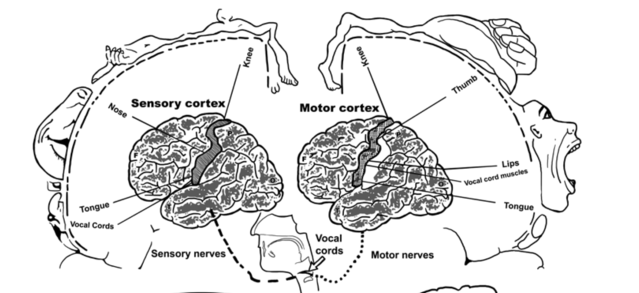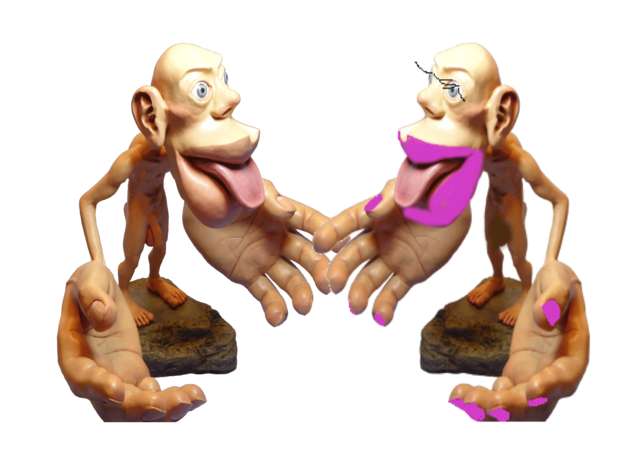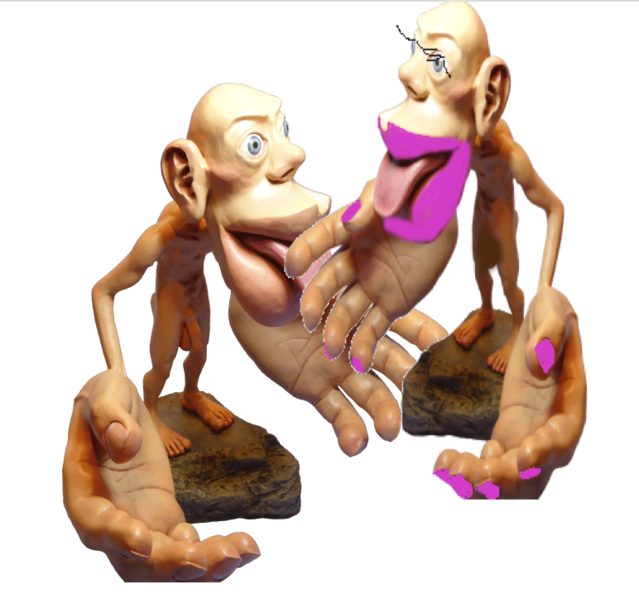Psychology
The Odd Psychology of Kissing
And, for that matter, why do we hold hands?
Posted August 4, 2017 Reviewed by Ekua Hagan

Why do we kiss our lovers on the lips?
We could show romantic passion by rubbing foreheads, locking elbows, or by turning back-to-back and bumping butts.
We could even mash our ears together.
Legend has it that Inuits (Eskimos) display sexual passion by rubbing noses, but it turns out the Inuit practice of Kunik (touching noses) is actually just a warm greeting for families and friends, not a show of sexual passion.
Although nothing to sneeze at, our noses — even for Inuits — do not seem to be the organ of choice for expressing romantic love.
So... out of all our candidate body parts, what is it about our lips that make them so special when it comes to matters of love?
Before answering the question, it’s important to point out that lip-to-lip romantic kissing is not universal across the globe. Roughly half of human societies lock lips; the other half — mostly primitive cultures in remote places — view the practice as “gross” or even “sharing dinner.”
But still, about half of the human race shows sexual affection by juxtaposing lips and, very often, by touching tongues.
Why?
Science hasn’t definitively answered this question, but I have a plausible explanation, which can best be understood by looking at Figure 1.

The left half of Figure 1 shows which parts of the tactile (somatosensory) brain respond with neural activation when a different part of the skin is touched.
Notice that a single thumb occupies as much somatosensory cortex as the entire torso, meaning that tactile stimuli applied to skin on the thumb activate more brain tissue than the torso, even though torsos are much larger than thumbs.
Notice also that lips and tongue also occupy a disproportionally large amount of somatosensory brain tissue.
When the sensory brain devotes a lot of neural tissue to a particular body part, such as the lips, the tactile acuity (the ability to sense small details on objects contacting the skin) of that body part will be high. Conversely, when the brain devotes very little brain tissue to a body part, such as the arm, skin on that body part will be insensitive to small details of objects placed upon it.
When we piece together the brain map of Figure 1 into a complete representation of the human body, we get the strange-looking character in Figure 2, called the homunculus. The homunculus is what your body actually looks like to your brain — or at least to the somatosensory cortex of your brain. The size of a particular body part on the homunculus is not proportional to the physical size of that body part, but to the amount of brain tissue in sensory cortex devoted to that body part, as shown in Figure 1.

Let’s do a quick experiment to illustrate what I mean.
Slide your upper lip along the upper edge of your bottom row of teeth. Pay attention to the small details you can sense on cutting edges of your teeth.
Next, slide the inside of your forearm across the same edge of the same teeth (as if you were biting your arm).
Observe that small details that your lip can easily sense are completely “invisible” to your forearm. The reason? Many more neurons in your somatosensory cortex process signals from the lip than signals from the inside of your forearm. More neurons = more tactile acuity.
This brings us back to kissing.
Figure 3 shows what happens when two people kiss (female on left, male on right).

Recalling that the size of body parts in these figures actually represents the amount of brain tissue devoted to those body parts, it becomes clear that kissing causes a lot of brain tissue of person A to stimulate — and to be stimulated by — a correspondingly large amount of brain tissue of person B. When you throw in tongues, really impressive amounts of brain tissue from the two individuals are “brought together.”
Viewed from the brain’s perspective, then, kissing (especially when the tongue is involved) is a very efficient way to provide a rich sensory experience and to maximize brain-to-brain intimacy.
But there’s more: Go back to Figure 1. The right-hand part of the figure shows the amount of motor cortex devoted to controlling muscles in different body parts. When a particular patch of motor cortex activates, muscles in the part of the body shown in the figure move.
As with sensory processing, when the brain devotes a lot of motor cortex to a body part, the amount of motor acuity (ability to make small, precise movements) is maximized. This means that the lips and tongue are capable of much more subtle, nuanced movements than, say, the back. This makes a lot of sense when you consider that we use our lips and tongues for speech, which requires precise motor control.
So not only does locking lips with another person juxtapose lots of sensory brain tissue, but it also maximizes the ability of one brain to exquisitely stimulate (via fine motor control) another brain.
By now, many of you will have noticed that the hands of the homunculus (for both sensory and motor parts of the brain) are also disproportionately large, corresponding to the very high tactile acuity and fine motor abilities of our fingers.
According to my brain-to-brain intimacy theory, you would then expect that people who were affectionate would not only kiss in order to maximize brain tissue-to-brain tissue contact but also hold hands, as suggested in Figure 4.

And in fact, although scientific research on romantic hand-holding is sparse, there is of course plenty of anecdotal evidence that romantically linked people hold hands.
I have been careful, up to this point, to couch the homunculus hypothesis of brain-to-brain intimacy as a theory, because there is no experimental proof, that I am aware of, that disproves alternate theories, such as lips simply look luscious, or hands are simply handy. But the hallmark of any good theory is that it makes testable predictions.
One prediction of my homunculus hypothesis is that loving couples would not only connect lip-to-lip and hand-to-hand, but also lip-to-hand, owing to the very large swaths of brain tissue devoted to both hands and lips, as demonstrated below.

And indeed, although results of my field research on the subject are very preliminary, there is both anecdotal and photographic evidence (Figure 5) that couples not only juxtapose hands and lips, but do so while simultaneously juxtaposing hands, which amplifies brain-to-brain intimacy even more.

For the couple shown here, yet another means of maximizing brain-to-brain contact, tongue-to-hand contact, might be occurring.
From the photograph alone, it’s hard to tell whether or not the gentleman’s tongue is, in fact, exploring his lady love’s hand, although the warm smile on her face suggests that perhaps it is.




